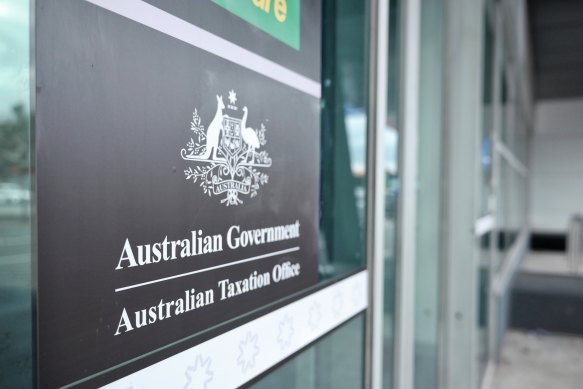Deadline looms for those who do their own tax returns

Save articles for later
Add articles to your saved list and come back to them any time.
The Australian Taxation Office is reminding taxpayers who do their own tax returns that they need to have them lodged by the last day of October, with those failing to make the deadline liable for penalties of up to $1565.
Those using a registered tax agent have until May next year to file, but for those doing their own returns, who miss the deadline, the ATO applies one penalty unit for every 28 days – or part of – that your tax return is overdue, up to a maximum of five penalty units.
The ATO is reminding those who do their own tax of the October 31 deadline to lodge returns.Credit: Luis Enrique Ascui
Each penalty unit is worth $313, so the maximum penalty for an individual is $1565. About a third of individual taxpayers complete their own returns, with the remainder using a registered tax agent.
Mark Chapman, director of tax communications at H&R Block, says the ATO will not generally impose a penalty if you are due a refund, but many people are not going to know that until they have completed their returns.
Also, where a penalty is applied, the ATO will sometimes waive it where it is “fair and reasonable to do so”; for example, if you are caught in a natural disaster or have a serious illness, Chapman says.
You can lodge much later than that without being penalised as long as you are registered with a tax agent by October 31, 2023. That gives you until May 15, 2024, to lodge your return, Chapman says.
The big change in tax returns for the 2022-23 year from the previous financial year that could catch out self-lodgers is how work-from-home expenses are claimed.
The ATO ended its simple “shortcut” method of claiming expenses at 80¢ for each hour of working from home to a new flat rate of 67¢ an hour, with more substantiation of the claims required.
A taxpayer is free to use the “actual cost” method – calculating the actual expenses incurred as a result of working from home – if the claim is likely to be higher, but it requires even more substantiation of the claims than for the flat-rate method.
Another big change for the year to June 30, 2023 compared to the previous financial year is the axing of the low-and-middle-income offset that had boosted the refunds of millions of taxpayers; though the low-income tax offset continues.
Chapman says those who are expecting a tax refund may end up with tax payable because of the axing of the low-and middle-income offset.
A particular compliance focus for the ATO is that of rental property deductions. A review of income tax returns by the ATO found many rental property owners were getting their returns wrong.
That can include leaving rental income out of their returns and over-claiming expenses, such as the interest expenses of a loan on the rental property.
You can only claim interest on a loan used to purchase a rental property to earn rental income.
“If your loan also includes a private expense, such as for a new car or a trip to Bali, you can only claim an interest deduction for the portion relating to producing your rental income,” ATO assistant commissioner Tim Loh said earlier this year.
Under the data matching program, the ATO has access to loan accounts, including details of the investment property, such as the address, as well as transaction histories, including when the loan was started and ended.
- Advice given in this article is general in nature and is not intended to influence readers’ decisions about investing or financial products. They should always seek their own professional advice that takes into account their own personal circumstances before making any financial decisions.
For expert tips on how to save, invest and make the most of your money, delivered to your inbox every Sunday, sign up for our Real Money newsletter here.
Most Viewed in Money
From our partners
Source: Read Full Article

